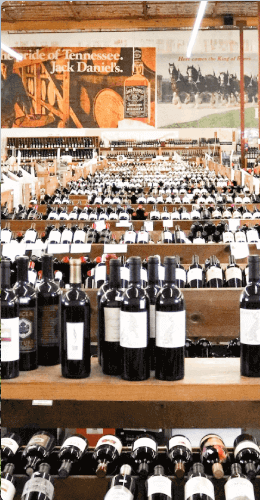Italy’s Barolo: An Introduction and Five Wines to Try

Considered one of the best of the world’s wines, many have designated Barolo as the king of wines, and it has certainly been the wine of kings. An exclusive red wine primarily made in the Italian province of Cuneo (Piedmont) using the best Nebbiolo grapes and undergoing long aging. Here are the chief characteristics of this Italian wine.
A Majestic Origin
Piedmont, the Italian region where the lineage of the kings of Italy, the Savoys, was born, presents a majestic terroir for winemaking. And so the noble Falletti family realized at the time. In the year 1807, the Marquis of Barolo, Carlo Tancredi Falletti, married the French noblewoman Juliette Colbert de Maulévrier. She discovered the great potential of the wine produced in the municipality of Barolo and insisted on making it the ambassador of Piedmont for all of Europe. Thus the name of this Italian red wine comes from the Marquises of Barolo, who began growing Nebbiolo in their vineyards.
A Denominazione di Origine Controllata e Garantita (DOCG) since 1980, Barolo is located in one of the most important wine-growing areas in northern Italy, in the Piedmont region. Specifically, in the province of Cuneo to the southwest of Alba, its territory encompasses 11 municipalities: five large ones (Barolo, La Morra, Monforte, Serralunga, Castiglione Falletto) and six smaller ones (Verduno, Novello, Cherasco, Diano, Roddi and Grinzane Cavour). All of them are in the Langhe terroir, an area of hilltop towns and ancient villages with small plots of vineyards where the soil, the exposure, and the microclimate change every 30 yards, thus ensuring enormous variability in the wines, comparable to the wines of the Burgundian Côte d'Or.
High-Quality Italian Wine from Nebbiolo
Barolo wine is obtained from the fermentation of the best Nebbiolo grapes, without a doubt one of the noblest varieties in Italy. Its name comes from the Italian word nebbia (fog) due to the intense fog that originates in the Langhe region at the time of grape harvest, generally in the month of October, although climate change is resulting in earlier harvests. This is not the only explanation for the name’s origin; there are those who say that it refers to the milky veil that grows on the skin of the grape when it ripens, and there are also those who think that it derives from the word nobile (noble), because of the variety’s high quality for winegrowing. Be that as it may, the truth is that it is a red grape associated mainly with the Piedmont region of northern Italy and that it is produced in different Denominazione di Origine Controllata e Garantita, not just Barolo but also Barbaresco, Roero, Gattinara, and Ghemme, many of which you can find at your favorite wine store California.
Difficult to cultivate, the Nebbiolo grape is primarily characterized by its delicacy. It takes time to mature, is susceptible to fungal disease, and oxidizes easily in the cellar. Although great care must be taken in its handling, the final result can be incredible. Its wines are powerful, perfumed and very complex, with a high level of acidity as well as a high degree of alcohol and tannins. It is often compared to another noble variety, Pinot Noir because both are very delicate but at the same time they produce complex wines, long-lived, and with less intense but very bright colors.
Long Ageing
There is no doubt that the terroir and the grape make these wines unique. However, the Barolos can only express all their organoleptic qualities when they go through a complete fermentation and a prolonged cellaring. The truth is that compared to other varieties, Nebbiolo has a higher content of polyphenols and produces very tannic wines that need several years of aging to be enjoyed. Specifically, the DOCG Barolo specifies that a wine produced within this appellation must age for a minimum period of 38 months, 18 of which are spent in barrels. If it is a reserve wine, the time is extended to 62 months, 18 in the barrel.
However, Barolo producers do not all agree on giving the “king” such a long aging process. And this is where the controversy begins between those who call themselves traditionalists versus the innovators, somewhat like in Spain’s Rioja region.
The Barolo Dispute
The controversy began between the 70s and 80s when the demand for Barolo red wine fell due to the general discontent of consumers who rejected the high prices of some producers. A generation of new winemakers emerged who wanted to break old patterns and denounced the creation of wines with excessive tannins, excessive aging, and frequent defects such as high volatile acidity or unpleasant aromas from traditional winemaking methods. Now, there’s a great variety of styles in Barolo wine when you order wine delivery USA.
Here's five different Barolo wines to try when you order wine online from Bottle Barn:
- 2018 Paolo Scavino Barolo (a great value!)
- 2017 Giuseppe Rinaldi Barolo Tre Tine (expensive, but worth ageing)
- 2017 Elio Altare Cannubi Barolo (95 points from Vinous)
- 2017 Vietti Barolo Lazzarito (praised highly by critics)
- 2017 Sandrone Luciano Le Vigne Barolo (fragrant & delicious!)
If you liked learning about Barolo, please check out Bottle Barn’s other articles about great wine.


















Leave a comment